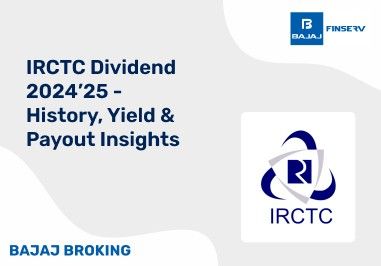Stock trading and investment have witnessed a sharp rise in India in recent years. Due to the increased popularity of stock market trading and the risk appetite of investors, many are choosing to invest in the stock market. While some investors are experts in this field and may maintain sufficient trading funds, others may need financial support.
To support the growing traders and their financial capabilities, MTF service is provided by many brokers. In this article, we will discuss all about margin funding, trading strategies, demat accounts and more.
Demat Accounts and Margin Funding Introduction
A dematerialisation account, commonly known as a demat account is an online portfolio where investors and traders can hold shares and securities. Anyone willing to do stock market trading or investment needs to have a demat account. Through demat accounts, the buying and selling of stocks are done. So, to purchase a security, you need to have that amount in your demat account. Now that you know what a Demat account is, let's understand what MTF services are.
Margin Trading Facility, commonly known as MTF trading is a type of service provided by brokers to investors. In simple terms, MTF is a loan offered by the broker to let an investor continue trading. Traders who lack sufficient funds for trading can opt for MTF from select brokers and repay the loan amount to retrieve their funds from the respective trade account. Among many trading strategies, MTF could also be one for many traders. Here is an example to help you better understand the margin trading service:
Zaheer, a 32-year-old individual, is a full-time stock trader. Zaheer is planning to purchase a stock worth ₹5 lakhs. However, his demat account only has ₹2 lakhs. So, Zaheer decides to opt for MTF trading. Luckily, Zaheer’s broker offers the facility of MTF services.
Zaheer borrows ₹3 lakh from his broker at an interest rate of 12%. Now, the condition of the MTF service is that the securities purchased by Zaheer by using MTF funds will be held as collateral by the broker until Zaheer pays the full loan amount.
Basics of Margin Funding in Trading
Margin Trading Facility (MTF trading) is a service that only select brokers provide. So, if you are flexible enough to opt for MTF sometime in the future, choosing a trading platform that provides MTF services can be a wise choice. For someone who is not very aware of MTF trading service, here are the pointers explaining the basics of margin funding:
Margin trading fund is a type of loan offered by the broker to let the investor purchase stocks that they may not otherwise afford
The MTF amount is disbursed in the same demat account. Hence, it is a concept of loan and does not require a separate demat account
In MTF, the entire trading amount is not provided by the broker. Only a part of it is disbursed as a loan. For instance, if the investor wants to purchase ₹10 lakh security but has only ₹2 lakh in the demat account, the remaining ₹8 lakhs can be borrowed as MTF from the broker
The trader has to provide an undertaking where they agree to the terms and conditions of the MTF provided by their broker
The margin amount, paid by the investor for a security, can be paid to the broker either in cash or equity collateral
Margin trading does not apply to all the stocks listed on the stock exchange. SEBI regulates and specifies the list of stocks for which traders can borrow MTF. Brokers, on their level, may further prune this list depending on their security and safety terms
It is crucial to note that only SEBI-registered brokers can lend margin trading funds. Unregistered brokers are not legalised to lend MTF services
Steps to Utilise Margin Funding Through a Demat Account
Now that you know about margin funding, let's understand how a trader can secure margin trading funds through a Demat account:
If your broker provides MTF services, you may have to sign the agreement for MTF uses before it gets activated. Your broker may provide you with the required documentation work needed to activate the MTF service
To avail of MTF services, the investor needs to have a percentage of the total security amount either in the form of cash or security collateral
Once MTF trading is activated and requirements are fulfilled, an investor is ready to place the order. To place the order, the investor can utilise their demat fund (if any) while the remaining amount will be funded by the broker in the form of a loan
Once the security has been purchased, the investor must keep monitoring the performance of the market. If the Demat account balance decreases below the maintenance level set by your broker, you will have to fill the balance to be able to continue services
Repayment of the borrowed amount must be done by the investor at the agreed interval. It can either be done by selling the securities or by depositing cash.
Advantages of Margin Funding with a Demat Account
Margin funding empowers the investor to achieve the unachievable. With sheer dedication, expertise, and sufficient funds, accomplishing your investment and trading goals is not that difficult. Margin trading acts as a great leverage when a trader is falling short of capital. Some of the striking benefits of MTF are:
One of the basic benefits of MTF trading is it allows an investor the leverage of having sufficient funds for trading purposes. One can choose the type of securities that they want without any compromise
Saving money can turn small amounts into a substantial amount over some time. It cannot be a source of quick funds. At times when there is a great chance at trading but the funds are not sufficient, availing margin funding can be a great option.
Risks Associated with Margin Funding Using a Demat Account
Advantages alone cannot suffice your knowledge for starting a marginal trading facility. You must be aware of the risks associated with MTF as well. Common risks associated with margin trading are:
When the investment is large, expected returns are large, and the expected loss is also large. So, when you borrow a sum amount from the broker to invest in securities, there are chances of suffering large losses as well. Sometimes, the loss may exceed the initial investment amount leading to a stressful situation.
MTF is just another name for a loan borrowed for trade. It charges interest as well. So, the actual profit from your trade will decrease since you'll also have to pay the interest from it. Additionally, when a loss occurs, the interest rate will further pose a financial burden.
MTF usually comes with a clause of margin demat account balance. If the Demat account fund falls below the margin level, your broker will reach out to get the margin level maintained. If you fail to maintain the margin level, your securities may be sold at unfavourable market rates to maintain the margin level.
A loan can be a great financial support. However, the situation remains favourable only till you are in a position of repayment. Stock trading and investment can be a risky deal, especially for those who are not experts. Losing a substantial amount in trading can pose extreme mental stress and the pressure of recovering the lost amount.
Regulatory Framework and Compliance for Margin Funding
SEBI has specific regulations for margin trading facilities. Here is what you must know about the regulatory framework and compliance issues by SEBI for margin funding:
Corporate brokers who have a net worth of ₹3 crores or more are eligible to provide MTF services to their clients. A proof of net worth has to be submitted by the broker
A broker is free to use his own funds or borrow the amount from an NBFC (Non-Banking Financial Companies) or a commercial bank. Funds from any other source cannot be used to provide MTF services by the broker
Brokers cannot use the funds of a client to lend it to another client, irrespective of whatsoever condition. The gross exposure of the trader has to be disclosed to the stock exchange including details of the clients
The indebtedness of a broker cannot exceed 5 times his/her net worth. Also, a separate ledger has to be maintained by the broker for their active clients
How to Manage and Mitigate Risks in Margin Trading?
Risks are a part of stock market investment and trading. Certain tips can help mitigate risks in margin trading, like:
Activating stop-loss in margin funding can be beneficial as it helps you sell securities before it suffers substantial loss
Make sure to maintain a margin level irrespective of any condition. For this, you must make a trading plan that is practical and suitable for you. Falling below the margin level may lead to the forced selling of securities and further loss for you
Do not avail the maximum leverage offered by your broker until you have the required risk appetite. Make a practical plan and it may help you mitigate various future financial risks and losses
Stay updated on the regulatory framework updates of SEBI
Common Mistakes to Avoid in Margin Funding Using a Demat Account
While margin trading can be lucrative, there are a few things that can put you in a tricky situation. Here are some common mistakes that you can carefully avoid:
Mistake #1: Overleveraging
A common mistake in margin trading is overleveraging, which happens when traders borrow too much money relative to their account size. Though leverage can boost gains, it can equally amplify losses.
Mistake #2: Improper risk management
In margin trading, setting a stop loss is crucial. Traders must establish and strictly adhere to stop-loss orders to limit potential losses. Neglecting proper risk management can result in significant financial setbacks.
Mistake #3: Avoiding margin calls from the broker
When your account's value drops below the broker's specified threshold, your broker will expect you to add shares/ money to your account. Ignoring margin calls can lead to forced liquidation of positions at unfavourable prices, causing substantial losses.
Mistake #4: Not weighing the pros and cons
Every trader should consider the risk-to-reward ratio, as it helps determine whether the potential profit justifies the possible risk of losing capital.
Mistake #5: Lack of knowledge
Margin trading demands a solid understanding of the forex market and trading strategies. Entering margin trading without adequate knowledge and experience can lead to disastrous results.
Conclusion
The above details may be conclusive for you to decide if MTF is a good idea for you or not. With consistent repayment of interest rates and a strictly maintained margin balance in your demat account, MTF can be beneficial. However, if you are not an expert or doubt the upcoming market scenarios, it is best to wait for a while and do your research and learning before entering margin funding. Along with profit, MTF is also subject to losses. So, try and create a practical plan, and smart trading strategies. As far as possible, do not get swayed away by the temptations of margin funding facilities. Open Demat Account today to explore smarter trading opportunities and manage your investments effectively.
Disclaimer: Investments in the securities market are subject to market risk, read all related documents carefully before investing.
This content is for educational purposes only. Securities quoted are exemplary and not recommendatory.
For All Disclaimers Click Here: https://bit.ly/3Tcsfuc













